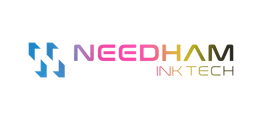So, what is CIJ printing? How does it work? And, why CIJ is preferred for industrial applications and how it can help your business. Let’s dive in.
While inkjet printers are a staple in most homes and offices, it is a different type of printing solution called ‘continuous inkjet’ – or CIJ for short – which is a leading technology for production and manufacturing printing. So, what is CIJ printing? How does it work? And, why CIJ is preferred for industrial applications. Let’s dive in:
What is continuous inkjet technology?
As its name implies, continuous inkjet (CIJ) technology utilizes a unique, innovative process to deliver a continuous stream of ink for printing on a medium. This is in contrast to the thermal drop-on-demand process that most home printers use, which tends to be slower and only works on a limited range of materials. Where speed, reliability, and versatility are priorities, companies turn to CIJ printing technology.
How does CIJ work?
CIJ printing has been around since the 1970s, so the technology behind it isn’t exactly groundbreaking. The best way to understand the process of CIJ printing is to break it down into individual steps:
- From the main ink bottle, an ink supply pump delivers the ink through a pressure regulator and into the printing nozzle, which has a microscopic orifice.
- Connected to the printing nozzle is a piezoelectric crystal that vibrates as a response to an electric current. This ultrasonic vibration causes the continuous stream of ink to break into very small droplets. By varying the current supply to the piezoelectric crystal, the rate at which the ink droplets are ejected from the orifice can be adjusted.
- The ink droplets pass through an electrostatic field created by a charged electrode. This results in the droplets being electrostatically charged. Not all ink droplets receive this charge – charged particles are separated by uncharged particles to avoid repulsion between subsequent droplets.
- The stream of charged and uncharged droplets passes through another electrostatic field created by a pair of charged plates. This causes the charged plates to deflect, thus directing them to the print medium. How far each ink droplet deflects is determined by how much electrostatic charge it contains.
- Only a small portion of the ink droplets end up being deflected – most of them are recycled. The uncharged droplets flow at a straight stream and are eventually collected by a recycle gutter. This gutter leads back to the main ink bottle, allowing the ink droplets to be reused.
The benefits of using CIJ technology
Quality
The use of a microscopic nozzle and an adjustable ultrasonic vibration mechanism makes the inkjet droplets in a CIJ system very small. This makes CIJ technology an excellent choice for printing high-resolution designs. There are even CIJ printers that are capable of photo-quality printing. Since the whole process is automated, you can expect the output of a CIJ printer to be consistent, even across a large number of products.
Speed
With electrostatically charged particles being ejected from the print nozzle continuously and at such a high rate, CIJ technology fits right into any fast-paced manufacturing environment. The droplets are also so small that they dry practically as soon as they hit the printing surface. Since the process is non-contact, there’s no need to spend time mounting the product before the printing nozzle can start doing its work.
Versatility
Another advantage of a non-contact printing technology such as CIJ is that it can print on any surface regardless of shape. Whether you’re printing on flat surfaces, curved objects, flexible materials, or uneven surfaces, a CIJ printer can be tweaked and adjusted to produce the results you want. You can make fine adjustments on the nozzle vibration and strength of the electric current to vary the thickness of the stream of ink droplets and the printing speed.
A CIJ printer can print marks or codes on practically any material (such as paper, metal, plastic, wood, and glass), objects with different shapes and textures, and at any speed and orientation.
Reliability
Since the printing nozzle of a CIJ printer is continuously engaged, there is less chance of it getting clogged with ink particles. CIJ printers can run many, many hours before they require maintenance. This can help keep production costs down and avoid tedious delays.
Industry applications of CIJ technology

With all the benefits of CIJ printing, it has mostly been used in industrial applications where time is money and quality is a priority. The expiration dates found in most food products are some of the most common examples of CIJ printing. Whether the food packaging is made of paper, plastic, or glass, CIJ printing can be relied on to print these codes and marks clearly and accurately.
The non-contact characteristic of CIJ printing also makes it an excellent choice for printing lot numbers and product codes on electronics. These electronic components can be extremely delicate and can be damaged by the slightest force or impact. Moreover, the codes printed on these components are critical in maintaining the traceability of the electronic parts. Not only do these marks have to be legible, but they also have to be permanent.
Similarly, the concept of traceability is crucial to the automobile industry. By printing identification numbers on each automobile component, assembly errors can be avoided. If a component fails, a printed production or batch code will also help manufacturers identify the reason behind the failure and to avoid further complications.
